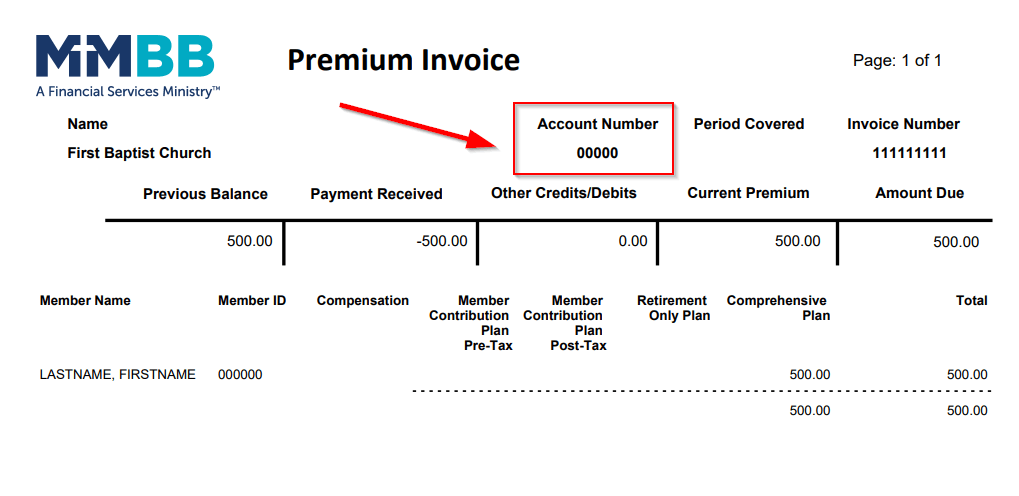Featured Article
While many retired clergy choose to enjoy their well-deserved season of rest, some seek ways to continue nurturing their spiritual calling.


Few people consider their time horizon (i.e., the number of years before retirement) and the impact it has on choosing an appropriate investment option as well as the period in which to invest in it. As you age, your time horizon before retirement declines, limiting the number and types of investment options that you should consider. For example, fixed income funds are generally considered to be much less volatile than equities. They are thought to provide more financial security to older participants who are concerned with poor return performance as they near their retirement. However, in terms of the probability of negative returns, plain “vanilla” fixed income securities can be risky. This is particularly true in the current period of very low annual yields when negative returns in the short run become more likely.
Although MMBB provides nine Defined Contribution (DC) investment options, our analysis will concentrate on four of the most popular investment options. The first option we’ll look at is the Balanced Fund which serves as the default option and constitutes approximately 82% of all net asset values. This is a multi-asset fund which invests in both equity and fixed income asset classes. The second fund, the New Horizons Fund also features equity and fixed income asset classes but also includes private equity, timber and real estate investments. The third option is the US Equity Index Fund. An index fund is a type of mutual fund with a portfolio constructed to match or track the components of a market index, such as the Standard & Poor’s 500 Index (S&P 500). The US Equity Index Fund is very similar to a Wilshire 5000 overall equity type of index. This registers the highest overall volatility of any of the fund options. Finally, we will examine the US Bond Fund which is a broad fixed income fund including government, corporate, and securitized instruments (like mortgage backed and asset backed securities). The benchmark for this fund is the Barclays US aggregate bond index. Together, these four funds comprise nearly 92% of all accumulated funds invested by MMBB active members.
The following analysis demonstrates a possible distribution of returns for each of the four fund options based on average returns and the probability of favorable or unfavorable outcomes. The simulations are based on both historic data as well as projections of average returns between various types of asset classes. The objective is to determine downside risk measured by the probability that a person’s average return will be negative over various time periods. Obviously a negative rate of return will reduce your balance over the relevant time horizon. Regardless of which of the four options you choose, the longer the average time period, the lower the likelihood of volatility. This makes sense since daily, monthly and even annual rates of returns tend to be offset over longer periods of time as a result of reducing short term irregularities over time. Clearly, equity returns will vary more than fixed income returns for any given time period. However, each asset class or fund will still measure less volatility as the time horizon widens.
Simulations were figured over 1, 3, 5, 7, 10, and 15- year time horizons, producing probability distributions of average returns, standard deviations, and likelihoods of achieving specific levels of return. The criteria we used was to determine the probability that we could receive negative returns over any one of these time horizons.
The graph below compares the probability of registering negative returns for the Balanced, New Horizons, the US Equity Index Fund and the US Bond Fund. For Balanced Fund investors, the probability of a negative returns decreases significantly over an average 15- year period. This confirms the extent to which longer periods dramatically lower downside risk. This compares with a slightly lower negative probability over both a one year and a 15-year period for those investing in the New Horizons Fund. As expected the US Equity Index Fund has the highest likelihood of obtaining negative returns. While overall the US Bond Fund has the smallest likelihood of registering negative average returns, there is little difference in downside risk during any given single year period. This is due to the fact that since MMBB is expecting only a small average annual return for the US Bond Fund, even relatively low downside volatility during very short periods can lead to negative returns. In contrast the New Horizons and Balanced Funds have higher average annual returns. In the short run the much higher returns of these two funds are offset by their significantly higher volatility. This makes their short-term likelihood of downside returns within any given year quite comparable to the US Bond Fund. In summary this analysis demonstrates that participants who are less than ten years from retirement would be more prudent to invest in the Balanced or New Horizon Funds. The US Bond Fund provides only slightly more downside relief with significantly less return. As the time frame to retirement widens beyond ten years, greater exposure to the US Equity Index Fund becomes more prudent. This demonstrates that the risk of slightly higher negative returns is offset by higher potential returns relative to the other three options. The table shows that with 15 years before retirement there is less than a 10% chance of receiving negative average returns from even the US Equity Index Fund. However, if you invested in the US Equity Index Fund with less than a 7- year horizon the probability of receiving a negative return rises to above 15%. This creates the need for a stronger tolerance for the potential of downside risk.
To learn more about your MMBB investment options contact one of our Certified Financial Planner™ professionals at 800.986.6222 or [email protected].
Back to Financial Resource CenterThank you for joining the MMBB mailing list. You will begin to receive information soon.
Translations of any materials into languages other than English are intended solely as a convenience to the non-English-reading public. We have attempted to provide an accurate translation of the original material in English, but due to the nuances in translating to a foreign language, slight differences may exist.
Las traducciones de cualquier material a idiomas que no sean el inglés son para la conveniencia de aquellos que no leen inglés. Hemos intentado proporcionar una traducción precisa del material original en inglés, pero debido a las diferencias de la traducción a un idioma extranjero, pueden existir ligeras diferencias.

MMBB Financial Services is pleased to unveil our new website experience.
Watch a guided tutorial of our enhanced site to introduce you to important new features designed to help you live your life with financial confidence.
You will be linking to another website not owned or operated by MMBB. MMBB is not responsible for the availability or content of this website and does not represent either the linked website or you, should you enter into a transaction. The inclusion of any hyperlink does not imply any endorsement, investigation, verification or monitoring by MMBB of any information in any hyperlinked site. We encourage you to review their privacy and security policies which may differ from MMBB.
If you “Proceed”, the link will open in a new window.


 Back to Top
Back to Top